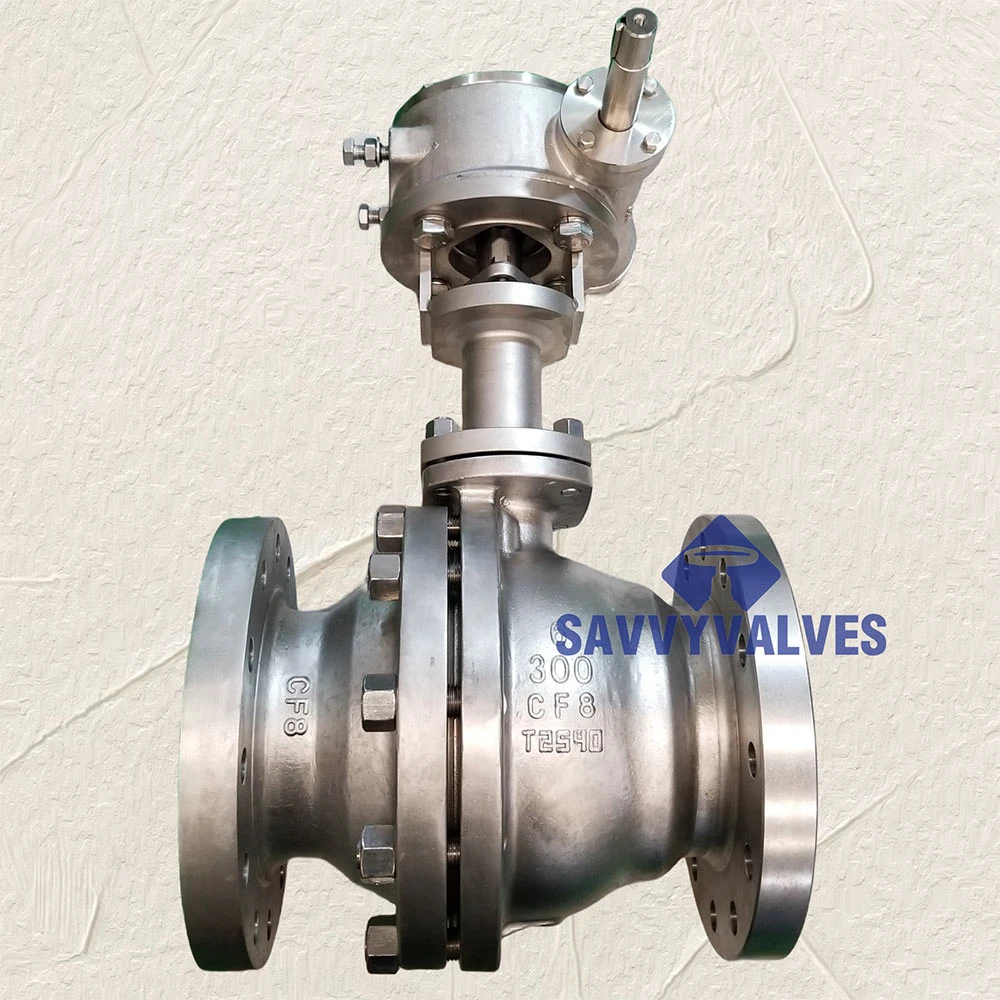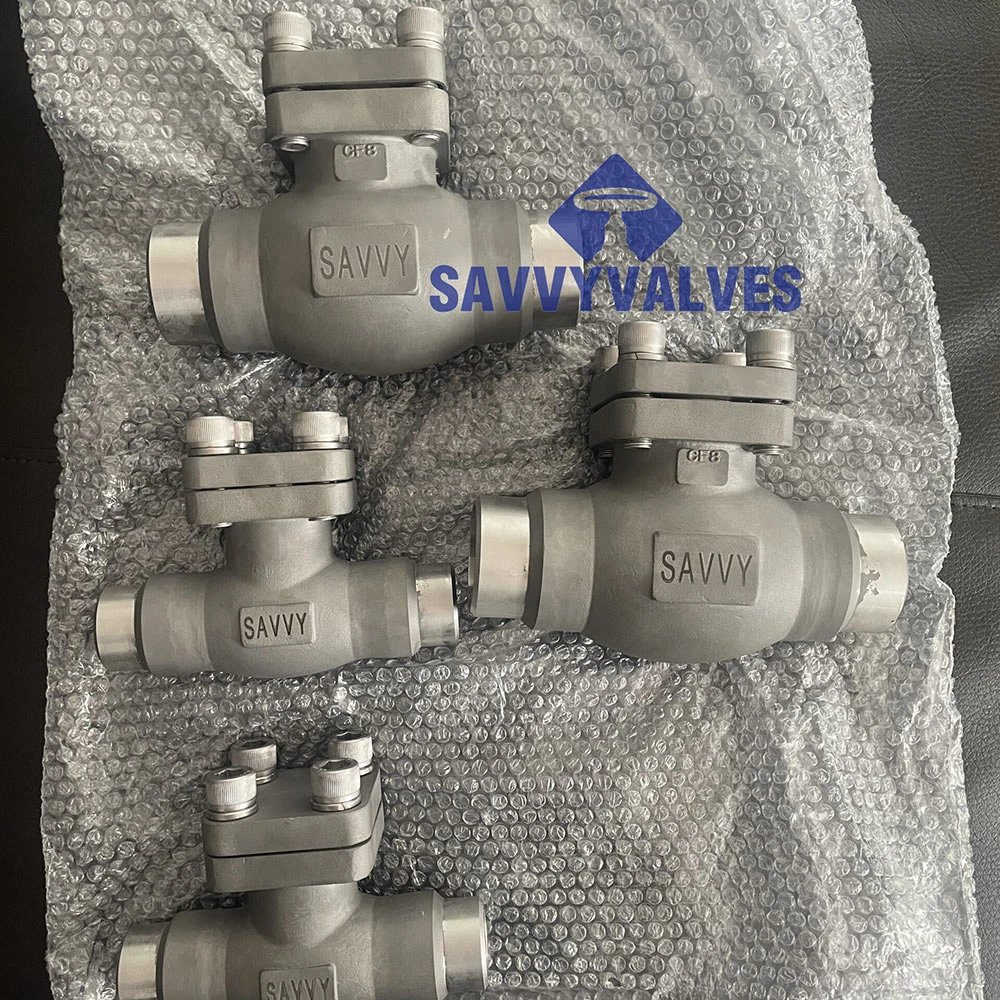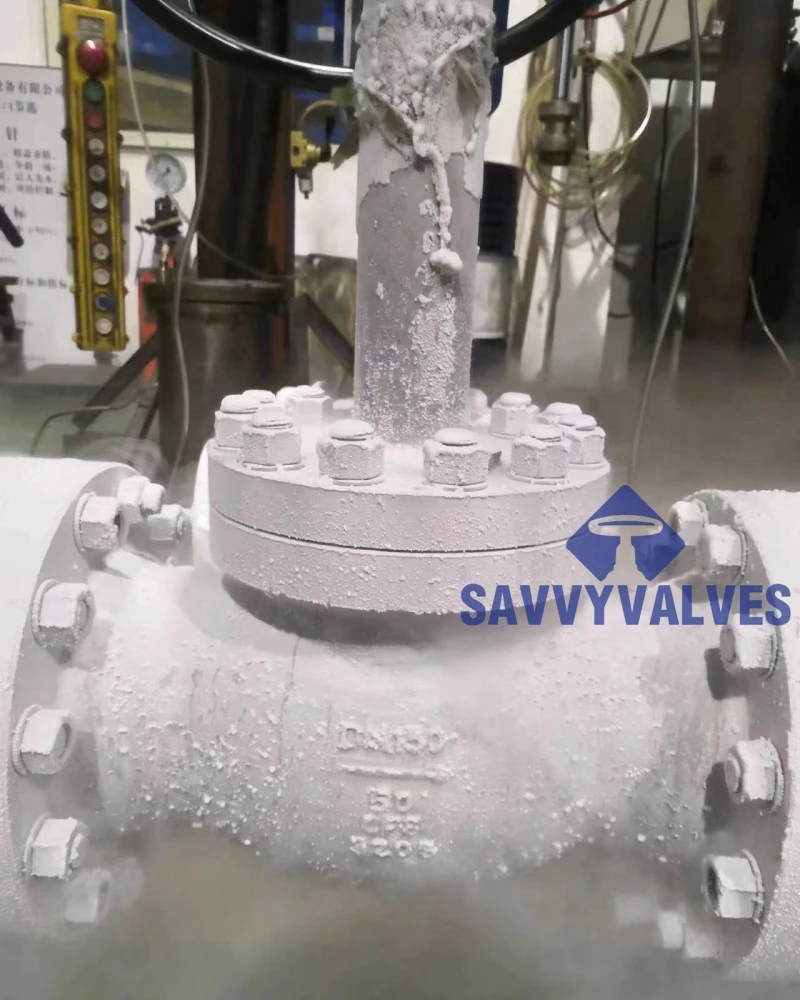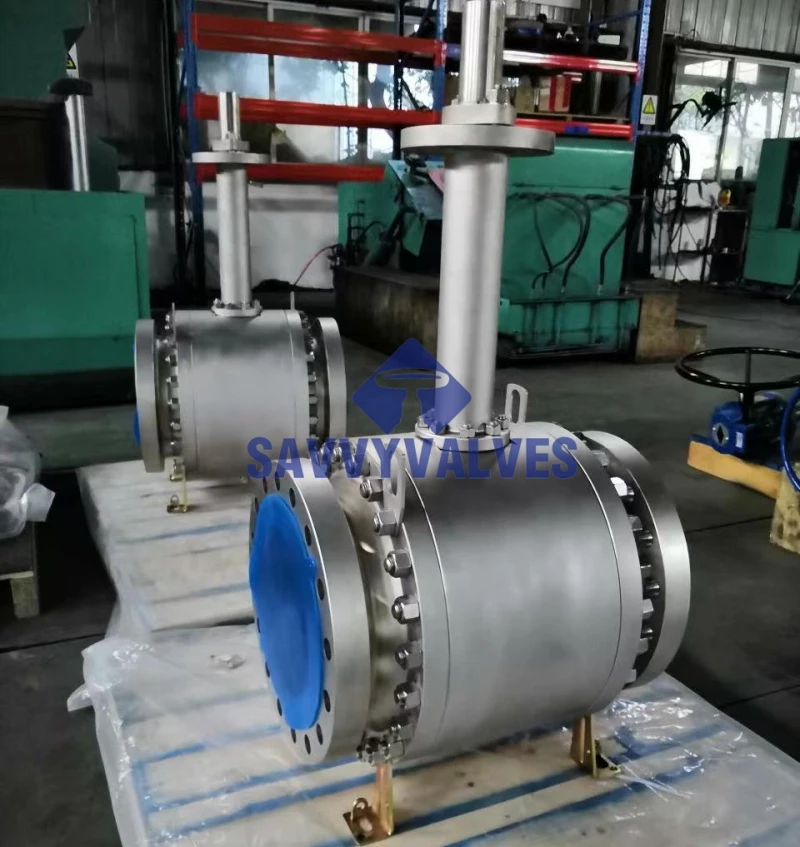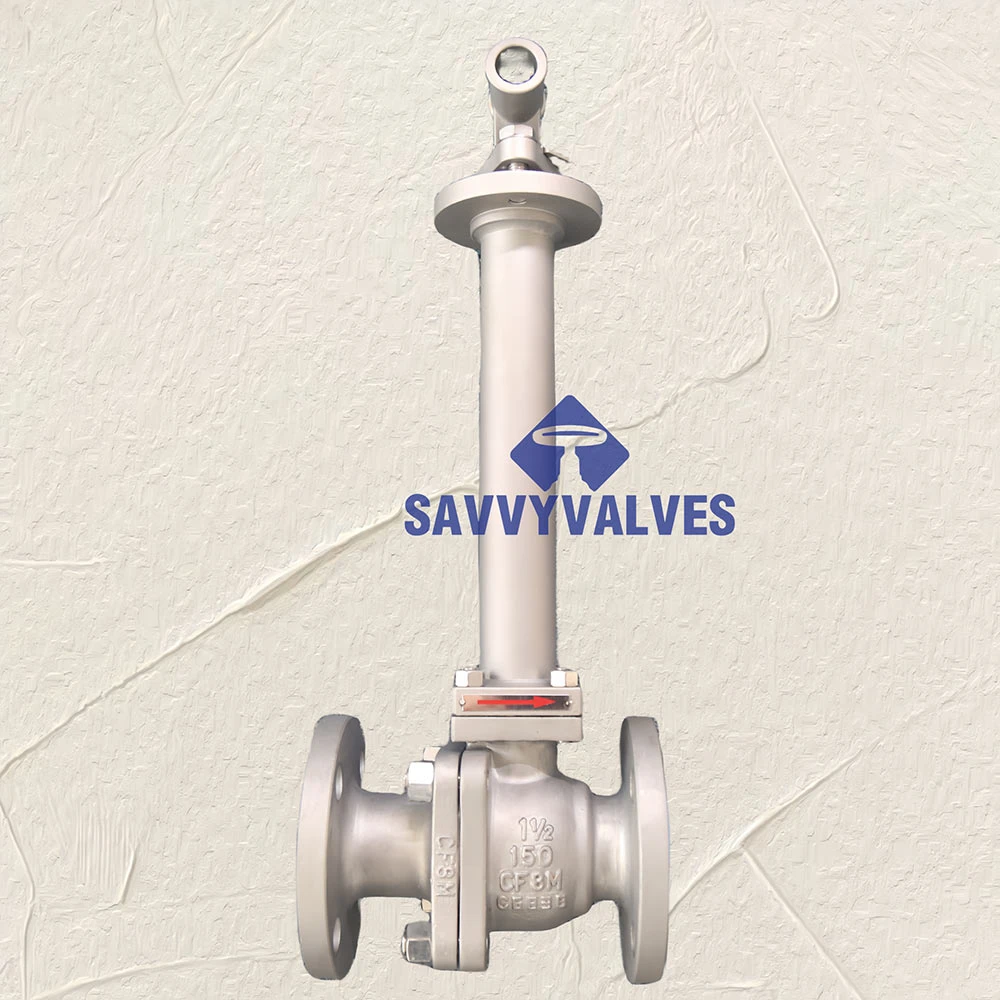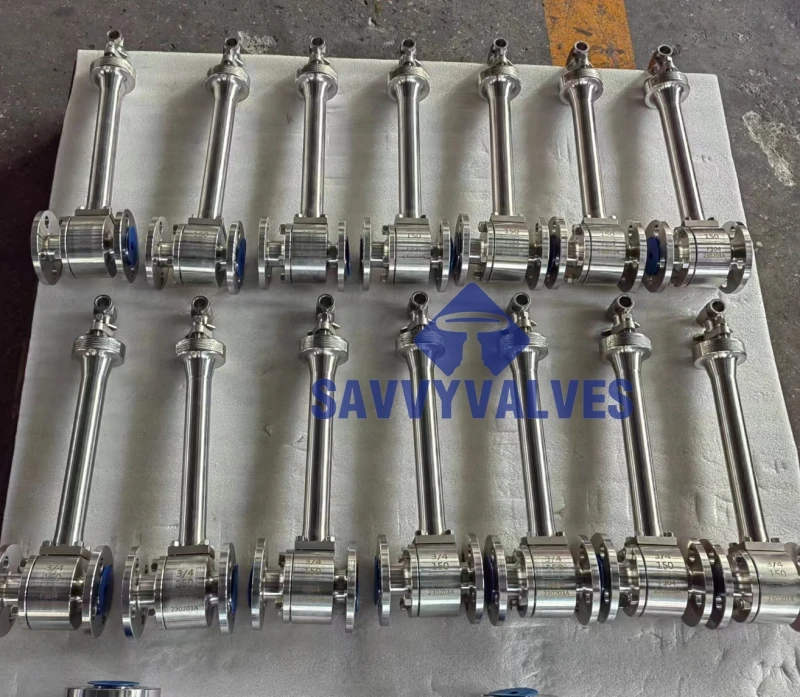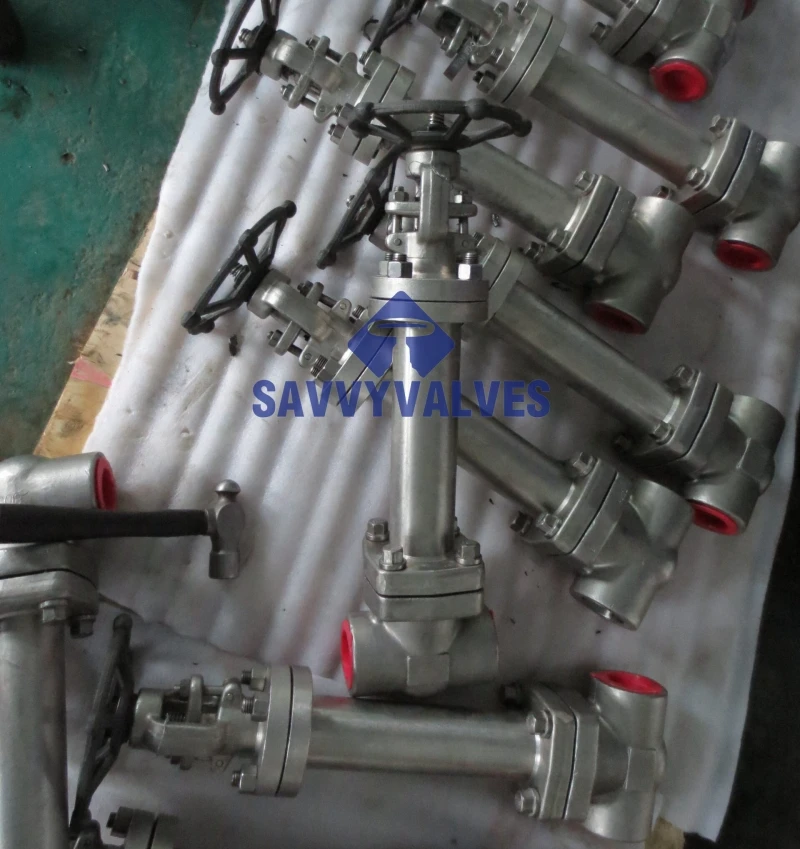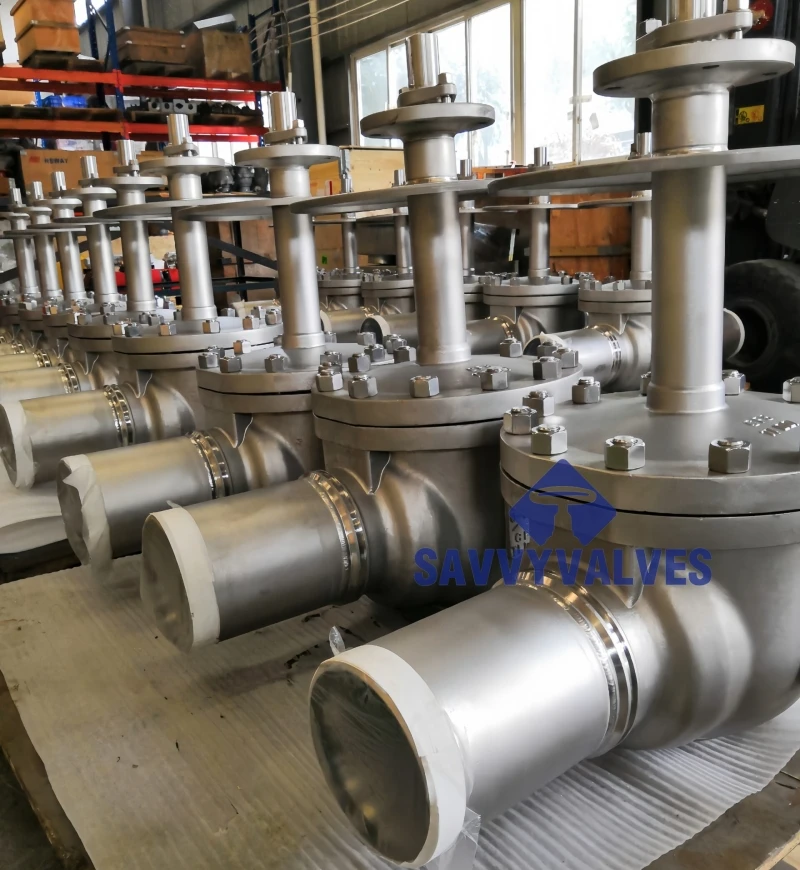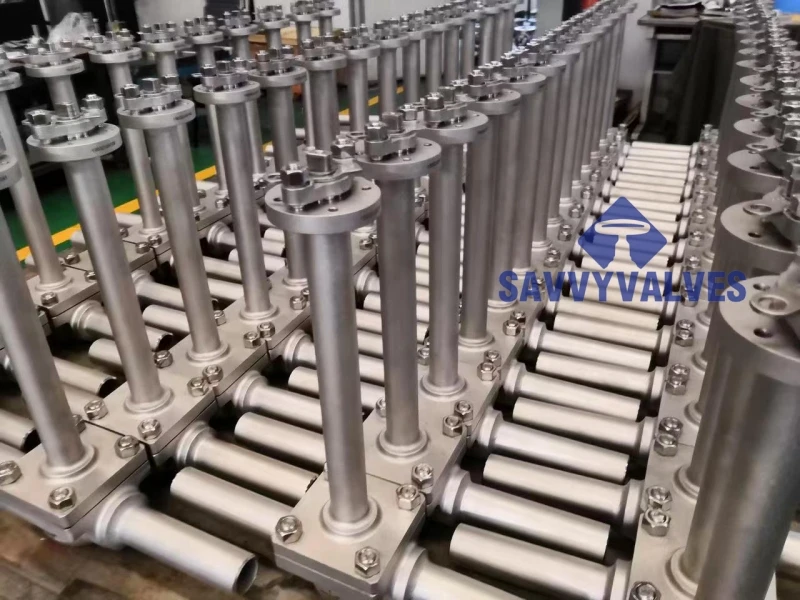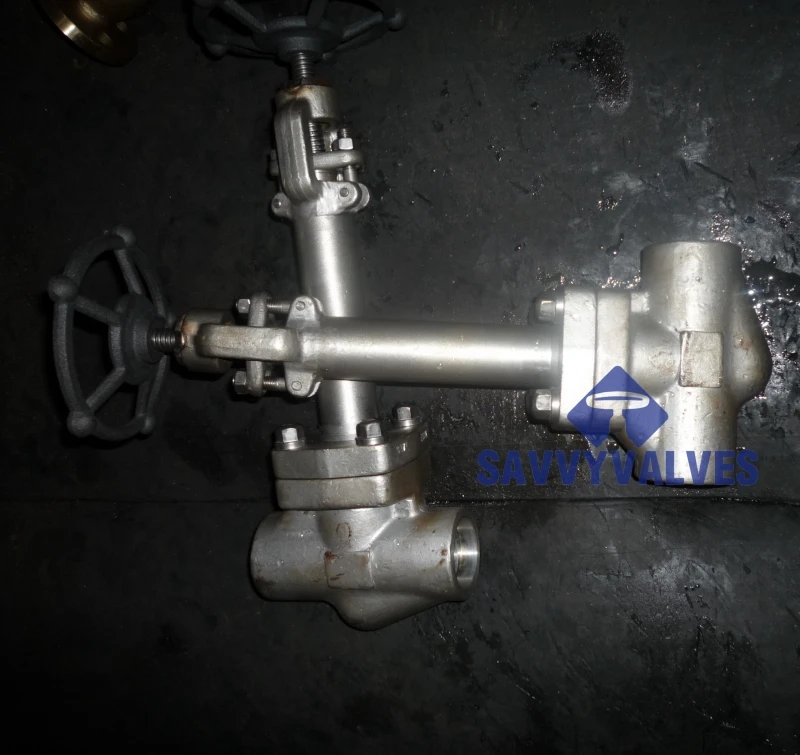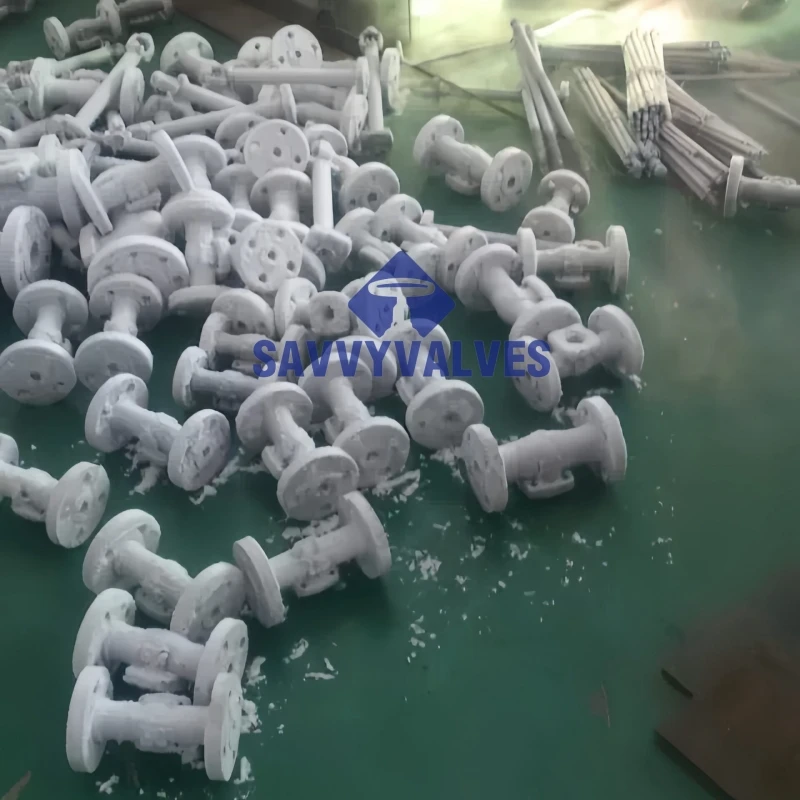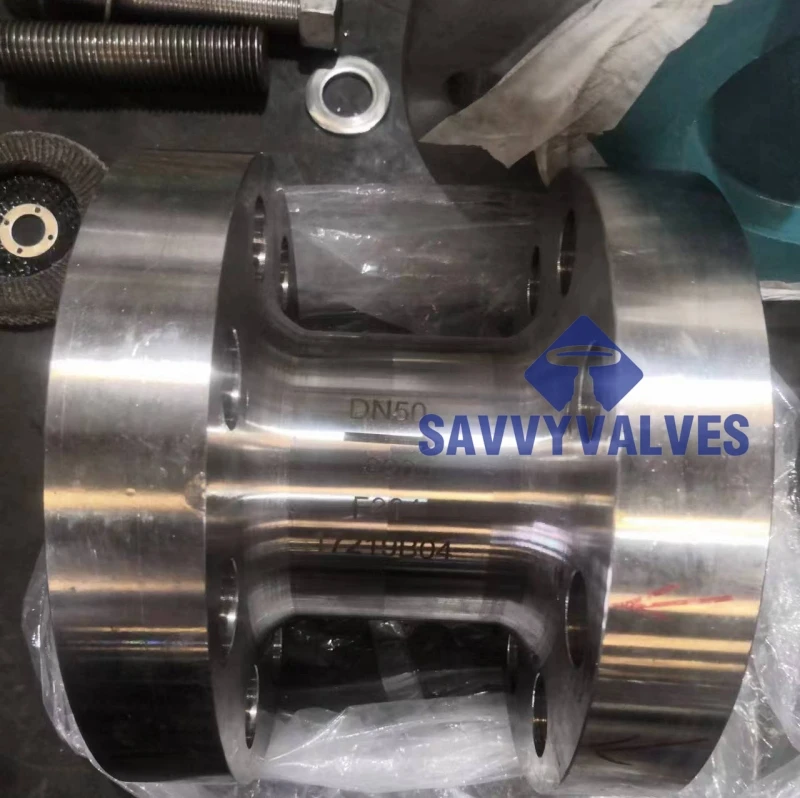Cryogenic Valves
-
PHOTO SHOWS SPECIFICATIONS AS BELOW
SIZE: 6″
RATING: 300LB
END: FLANGED AS PER ASME B16.5 300LB
TEMPERATURE: -70 ℃
BODY AND BONNET : ASTM A351 CF8
BALL: ASTM A182 F304
STEM: ASTM A182 F304
SEAT: SPRING ENERGIZED PCTFE
ACTUATION: PNEUMATIC ACTUATOR
-
SAMPLE SPECIFICATIONS
SIZE: DN25 DN40
RATING: PN16
END: BW AS PER B16.25
TEMPERATURE: -196 ℃
BODY AND BONNET : ASTM A351 CF8
PLUG: ASTM A182 F304+HF
SEAT: PCTFE OR HF METAL
ACTUATION: SPRING LOADED
-
SIZE: 3″
RATING: 300LB
END: RF AS PER ASME B16.5
TEMPERATURE: -196 ℃
BODY AND BONNET : ASTM A351 CF8
WEDGE: SOLID ASTM A182 F304+HF
STEM: ASTM A182 F304
SEAT: HF METAL
ACTUATION: HAND WHEEL
-
SIZE: 6″
RATING: 300LB
END: FLANGE AS PER ASME B16.5
TEMPERATURE: -196 ℃
BODY AND BONNET : ASTM A182 F304
BALL: ASTM A182 F304+HF
SEAT: PCTFE OR HF METAL
ACTUATION: MANUAL AND GEAR
-
PHOTO SHOWS SPECIFICATIONS AS BELOW
SIZE: 1-1/2″
RATING: 150LB
END: FLANGED AS PER ASME B16.5 300LB
TEMPERATURE: -196 ℃
BODY AND BONNET : ASTM A351 CF8M
BALL: ASTM A182 F316+HCR
STEM: ASTM A182 F316
SEAT: SPRING ENERGIZED PCTFE
ACTUATION: LEVER
-
SIZE: 3/4″ 6″
RATING: 150LB 300LB
END: FLANGE AS PER ASME B16.5
TEMPERATURE: -196 ℃
BODY AND BONNET : ASTM A182 F304
BALL: ASTM A182 F304+HF
SEAT: PCTFE OR HF METAL
ACTUATION: MANUAL AND GEAR
-
SIZE: 1/8″~4″
RATING: 800LB
END: SW AS PER ASME B16.11
TEMPERATURE: -196 ℃
BODY AND BONNET : ASTM A182 F304
WEDGE: SOLID ASTM A182 F304+HF
STEM: ASTM A182 F304
SEAT: HF METAL
ACTUATION: HAND WHEEL
-
SIZE: 8″
RATING: 150LB
END: FLANGE AS PER ASME B16.5
TEMPERATURE: -196 ℃
BODY AND BONNET : A351 CF8M
BALL: ASTM A182 F316+HF
STEM: ASTM A182 F316
SEAT: PCTFE OR HF METAL
ACTUATION: MANUAL AND GEAR
-
SIZE: 1″
RATING: 150LB
END: BW AS PER ASME B16.25
TEMPERATURE: -196 ℃
BODY AND BONNET : A182 F316
BALL: ASTM A182 F316+HF
STEM: ASTM A182 F316
SEAT: PEEK OR HF METAL
ACTUATION: MANUAL AND GEAR
-
SIZE: 1″
RATING: 800LB
END: SW AS PER ASME B16.11
TEMPERATURE: -196 ℃
BODY AND BONNET : ASTM A182 F304
WEDGE: SOLID ASTM A182 F304+HF
STEM: ASTM A182 F304
SEAT: HF METAL
ACTUATION: HAND WHEEL
-
SIZE: 1/8″~36″
RATING: PN250
END: RF AS PER ASME B16.5
TEMPERATURE: -196 ℃
BODY AND BONNET : ASTM A182 F304
WEDGE: SOLID ASTM A182 F304+HF
STEM: ASTM A182 F304
SEAT: HF METAL
ACTUATION: HAND WHEEL
-
SIZE: 1/8″~24″
RATING: 900LB
END: RF AS PER ASME B16.5
TEMPERATURE: -196 ℃
BODY AND BONNET : ASTM A182 F304
PLUG: ASTM A182 F304+HF
SEAT: PCTFE OR HF METAL
ACTUATION: SPRING LOADED
Cryogenic valves are specially engineered valves designed to operate in extremely low temperatures, typically below -150°C (-238°F), often used in the storage and transport of liquefied gases like LNG, liquid nitrogen, oxygen, or helium. These valves are built with extended bonnets to isolate the stem and packing from the cold media, preventing frost build-up and maintaining seal integrity. The materials used in cryogenic valves are carefully selected to withstand thermal shock and maintain flexibility and durability at cryogenic temperatures—common materials include stainless steel and Monel. These valves are usually top-entry or bolted-bonnet types for easy maintenance and are often fire-tested and certified for leak-tight performance under cryogenic conditions. Their seats and seals are typically soft-seated (PTFE or similar) for bubble-tight shut-off, although some use metal-seated designs for severe applications. The primary function of cryogenic valves is to provide precise control and reliable shutoff of cryogenic liquids and gases, which are stored under high pressure at low temperatures. Their design must also accommodate pressure buildup during rapid vaporization, ensuring safe venting and flow control.
- 1
- 2

